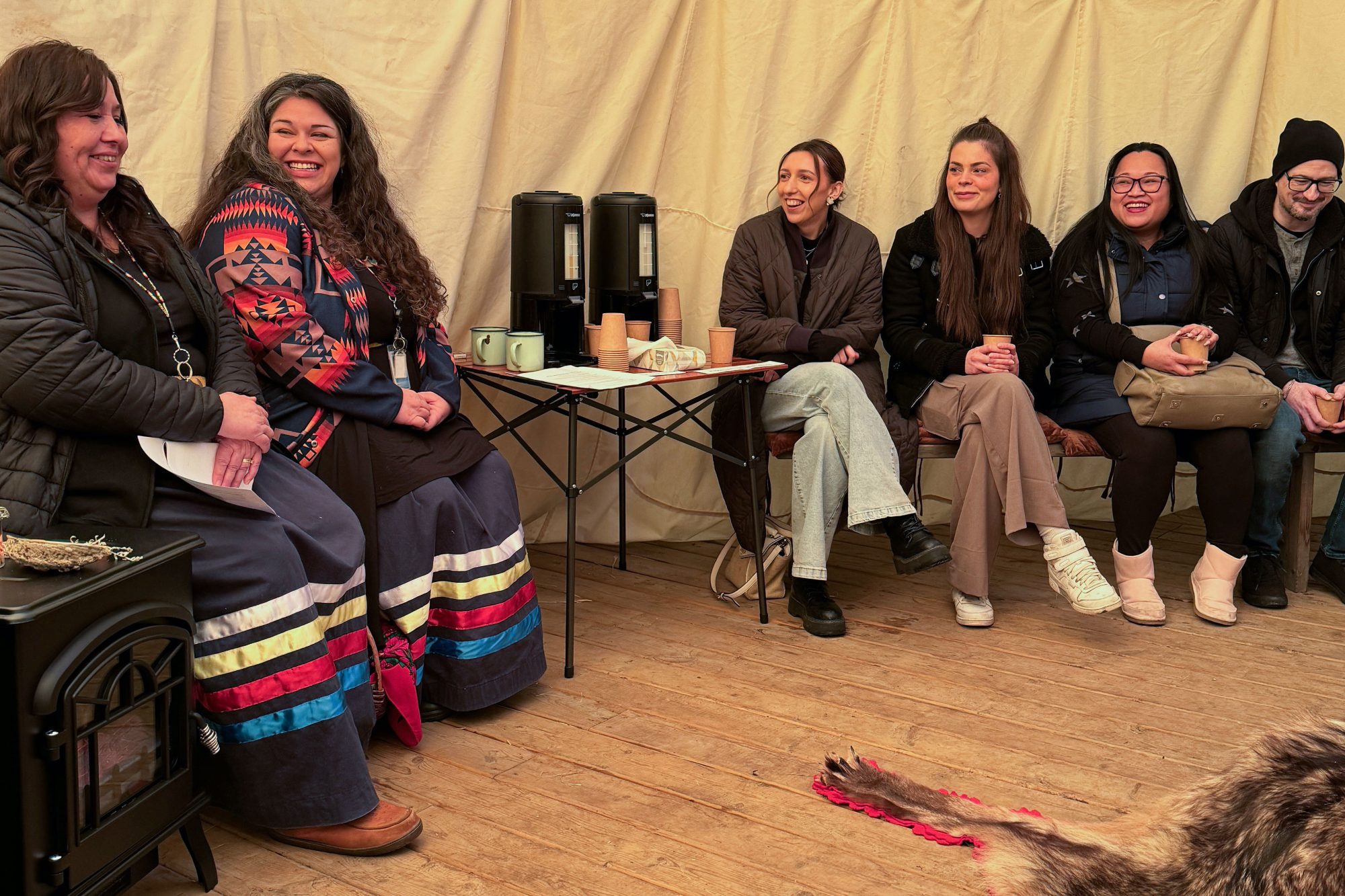For most people, it’s probably been a long time — maybe even as long ago as your kindergarten days — since you’ve sat down and intently listened to a story. Fort Edmonton is looking to change that while also upending stereotypes, like the one I just mentioned, about who stories are for and what telling them looks like.
The Indigenous Storytelling Series is the latest addition to Fort Edmonton’s Indigenous Peoples’ Exhibit (IPE). The series showcases Indigenous stories (this year’s selections are from the Dene and Cree cultures) in an immersive and intimate experience that runs each Saturday from now until March 23.
Delivered by the IPE’s two Indigenous interpreters, Anna Cousins and Pamela Greene, this series isn’t the kid-centric story time that might first come to mind. Instead, these stories skew to the mature side of things and are intended for an adult audience that can understand and appreciate the wide array of cultural and narrative nuance inherent in the tales.
“It’s a whole culture of storytelling,” Cousins says. “There are funny stories, scary stories. There are stories about lust and tales of mourning. It’s not just the nice stories with a nice lesson. We have those, but we also have stories that are dark. It’s a full culture, and it breaks stereotypes in that way.”
The series strives to break other stereotypes too, specifically about who the act of storytelling is for.
“When we think of storytelling, we often think of telling stories to kids, but as adults, we still crave those stories,” Cousins says. “So this is a nice way for adults to come together and do something that’s social but where you’re also learning things you might not be familiar with.”
Intended to be an ongoing series that changes thematically from season to season, this season’s stories focus on the archetype of “the trickster,” a choice made in light of the program’s winter start.
